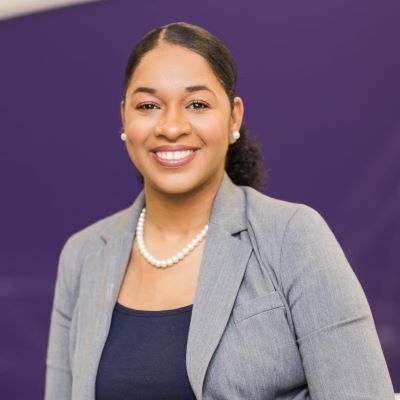Enter your email to receive the CareQuest newsletter:
January 29, 2024

In late 2022, Raydiance Swanston, MPH, CHES, was eager to bring the Community Oral Health Transformation (COrHT) program to the Mecklenburg County Pediatric Clinic in North Carolina. CareQuest Institute talked to Swanston at that time to discuss her expectations and why she felt the program — which provides a framework for safety net dental clinics to help transform oral health care delivery — was an ideal fit for her clinic.
One year later, how are things going?
We followed up with Swanston to hear more about her experience and how the program has helped the clinic to break down barriers and expand access to even more people in the community. The Mecklenburg clinic is one of 14 safety net dental clinics across North Carolina that have participated in COrHT, forming a learning community that has worked to redefine what efficient, equitable oral health care looks like. COrHT focuses on prevention, minimally invasive care, and integrating medical care into oral health care, with the goal of making it more accessible for everyone.
Below, Swanston shares her learnings:
How has your experience with COrHT benefited the clinic overall?
The clinic is really undergoing a transformation, moving toward more value-based care and integrated care. We’re already seeing how this is benefiting patients. We’re implementing caries risk assessments, are now checking patient vitals to determine if they need primary care, and screening and providing referrals for social determinants of health and food insecurity. Through COrHT, we’ve also been able to secure additional community partners to refer patients who may need more specialized care. For example, we don’t have nitrous oxide (laughing gas for sedation) at the clinic, so we would have to refer that out to another pediatric provider.
Have you seen any unexpected benefits from participating in the learning community?
Yes, it was somewhat of a surprise how much it has impacted our ability to recruit new providers. We found that even in the midst of a workforce crisis, our participation in COrHT was a big draw for dentists and dental hygienists interested in a more integrated, minimally invasive care approach. We even had providers from across the country hear about this and reach out. We now have four dentists, up from one-and-a-half a year ago.

You mentioned last year that one of your biggest goals was to expand the clinic’s dental care to include adults. Have you made progress toward that goal?
We’re very excited about this. Over the last year, we completed a feasibility study and determined what it would take to best help the county scale to offer adult dental care. And in the coming year, we’ll be launching a mobile program to service the entire community, including adults and kids. This is huge progress and wouldn’t have been possible without COrHT.
Through COrHT, and with CareQuest Institute’s support, we were able to gather data and provide metrics to demonstrate to county leaders and decision makers that our goals made sense. It allowed us to have a stronger voice in the community and build consensus among people not as familiar with dental [care] disparities.
What were some of the challenges you faced when trying to make large organizational changes?
Naturally, it was a little bumpy in the beginning. It’s hard to change a program that has been running exactly the same for 25 years, including the same technology. So, there was a learning curve, but everyone got there and now it has become more routine and our providers are very excited about it.
This was my first experience working with COrHT and funders, and I knew bandwidth would be a challenge. But I have a lot of gratitude for CareQuest Institute for the support provided throughout the year.
What is your reaction when you see your clinic expanding access to care in so many ways?
I’m so excited to see the mobile clinic coming to fruition and to have an opportunity to bring something significant to a community that wouldn’t typically have accessible and affordable dental care. We’ll be starting in schools and, when schools aren’t in session, going to community resource centers, community engagement events, and health and wellness events. It’s going to be everywhere, and we’ll also be serving adults.
We’ll also be tackling teledentistry this year. Now that we have the mobile unit, we know we need to utilize opportunities to connect with people who can’t drop what they are doing and come to the clinic for emergencies. So, we’ll be working with our IT department to make sure our technology supports it.
Do you have any advice for future participants in oral health learning communities?
I would say to really participate and engage with the learning community, which has been a great support and resource. I always tried to engage in the community calls, to help others learn from what we did, and share the wins and challenges. I would also say to anyone starting out that it’s okay to not solve everything right away.